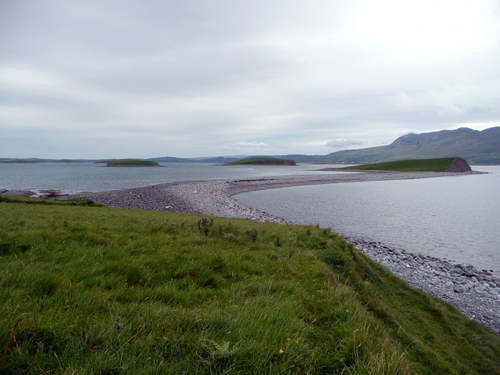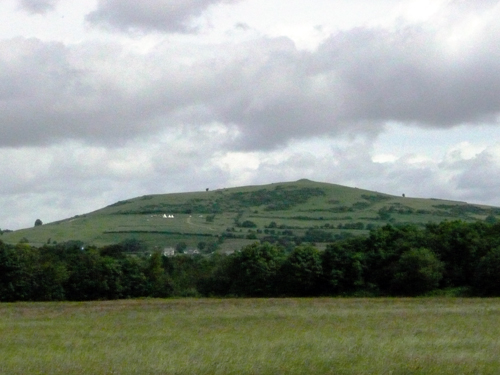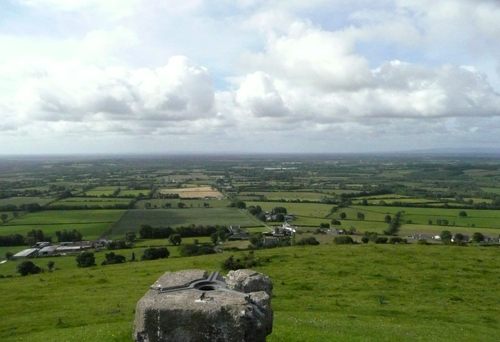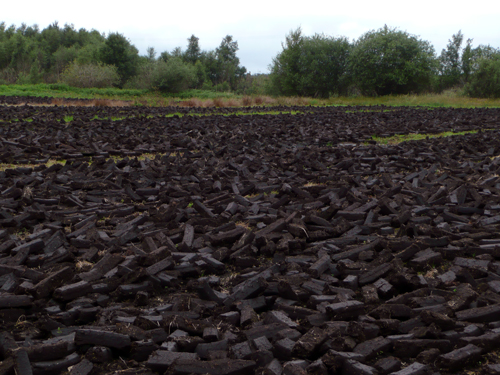Over the next two weeks I will be posting reflections on my time as resident at The Good Hatchery and Ireland in general. It’s a pleasure to have the opportunity to revisit the good folks I met while traveling and to share these images, thoughts and ideas with the Art21 Blog’s audience. Hope you dig it.
I arrived at The Good Hatchery on June 28th, 2012, ready for some concentrated studio time. Having finished some heavy studio work in Chicago, followed by a whirlwind two weeks of traveling, I was ready for some serious woodshedding. My residency at The Good Hatchery is located west of Dublin about 45 minutes or so.
An introduction: The Good Hatchery is a small, artist-run space nestled in the backfields of County Offaly, near Croghan Hill. You know, where they found the partial remains of an Iron Age-era man a few years back, which isn’t such an uncommon occurrence–the popular name for these uncovered remains are “bog bodies.” It’s not quite so near now, but yet not so far either; seems if you go digging long enough, new landscapes emerge. The people running the residency are all invested in supporting the continued use of this 19th century farmhouse estate for differing reasons but cooperative goals. The purpose of this rehabbed hayloft now focuses on structural investigations into community and critique. Ruth E. Lyons and Carl Giffney, the kind folks that run the space, have been working, alongside others, since 2007 to restore, update, and re-concern the compound for the purpose of exploring the resources and context that this rural space could provide.
I’m here to shoot some 16mm film of the peat bogs in the environs surrounding the residency. This is part of a larger film-work that began in the salt flats of Utah, then continued on to a small island in Clew Bay on Ireland’s west coast. This final installment centers on images of the industrial bog here in County Offaly, which at some point in the past was covered by an extensive lake. The shifting images of Utah’s blown-out horizons and the liminal space of the Bay’s shoreline have lead me here to dig deeper into the expansive turf and skies of Ireland’s midland.
I met Ruth on a trip last summer called Aerial Blue, which she organized with Claire Feeley. This project took a handful of artists to a small island that was once owned by John Lennon, interestingly enough, for a four-day excursion to explore and discuss the concept of island-ism. The experiment really seemed to ask: would you become a castaway or a utopian? Or at the very least, how might a group of strangers interact within a bounded space, and what kind of dialogue might dawn? At Aerial Blue, each participant was asked to present or perform an action of some kind, in effect to give an offering to the greater good. There were theoretical discussions, photo shoots, yoga, dowsing, and a bevy of tasty treats provided, to name just a few of the activities. At dusk, I offered up for them an a cappella version of the King Crimson smash hit, Islands, from the 1971 album of the same name (much-needed I am sure). Having tackled the never-ending horizon with the Salt Flats film, it was on this island that I began thinking about the area occupied by the shoreline, to explore the ebb and flow of the space where sky lands at sea, and vice versa.
With the opportunity to visit The Good Hatchery, of which I learned more about on the island, I became fascinated by not only the history of the estate but the surrounding bog-lands. What remains of the once quite large estate is now confined to a courtyard, a few buildings, and some farmland. Generations ago, the estate had been politically parceled off to different owners, but now remains mostly as grazing lands and some privately-owned bog. The extended area has been converted into industrial bog-land and is for the most part in a state of preservation. This landscape provides fascinating views that are very far afield from the cornfields this Midwesterner is used to. But let’s get back to Croghan Hill.
I am partial to the St. Bridget myth myself; St. Bridget, in her pre-Christian incarnation of Brigid, was said to believe that beneath Croghan Hill lied the magic underworld of Bri Ele. This faith in something bigger and beyond our comprehension, yet beneath our everyday path, could be tied to the notion that what lies buried might be of more wealth than what comes to harvest.
This summer, as I made my own slight pilgrimage up Croghan Hill one drizzly Sunday morning, I passed a temporary campsite consisting of teepees, car campers, and an obstacle course built, I assume, by some type of scout troop/boy brigade. These intrepid campers shot me some odd or at least quizzical looks as I ventured up the hill in the early hours of the misty morning, trusty Bolex in hand. To reach the acme, you have to cross some livewires and pass herds of cattle that seem nonplussed by it all. At the peak is the mound atop which you can stand to gain access to clouds above and a distant horizon as they disappear, covered in the haze. A space that appears close enough to touch yet too far to reach.
Now what makes this distance of interest, in relation to the Croghan Man mentioned earlier, is the discovery of his body found buried in the bog in proximity to the hill. In 2003, a farmer harvesting turf uncovered the remains of a body. At first notice, the farmer thought it might be a recent murder, but upon investigation by the experts and authorities, they found that the remains dated back to the Iron Age. The torso alone provided much information about the man’s death, but the most interesting part was that this fella was over six feet tall–an astounding height for that period, apparently.
Due to its high acidity, the bog itself preserves things in an almost perfect condition. Like a fly cast in amber, this gentleman’s remains, whether he was murdered or served up as an offering (perhaps to Bri Ele?), appears to have passed these many moons relatively unharmed while in his undiscovered state: thus lands the harvester. If not for the incision into the turf by the blade, he would’ve gone unnoticed for who knows how long. Now, the discovery of his remains in the soil has extended his life like a phoenix, now in a much-different, and assuredly undesired state… for him, at least. Although a boon to the archeologists among us, the disturbance of Croghan Man’s resting place, not to mention the depletion of the bog itself, brings up hard questions of distance and time: whether to keep it or to gain on it?
“It’s alarming how charming it is to be a-farming
How calming and balming the effect of the air”
—Now, I’m A Farmer, Pete Townshend
Bord Na Mona, the government’s large-scale peat harvesting industry, is now looking to convert many areas of harvested peat bogs into a new source of energy founded on wind. The depleted bogs will soon be home to windmills, introducing a drastically new horizon for the community. Some of the bogs have been designated as forest rehabilitation, while others, purchased by logging companies, are planted with excessive pine trees for harvesting when they come of age. Aside from concerns about the alarming amount of carbon dioxide released from peat harvesting, the period of time it takes to gain fruition from the tree harvest is mind-boggling. But funny how things accrue significance when left to rest for a while, if only to be dug up later and re-purposed. So whether at the hands of large logging companies, turf harvesters, the family farmer, or the intrepid artist group, when the tide comes back in, there is a wealth of history to mine for here–both visually and physically.
I’m simply interested in looking hard at some dirt and clouds.








